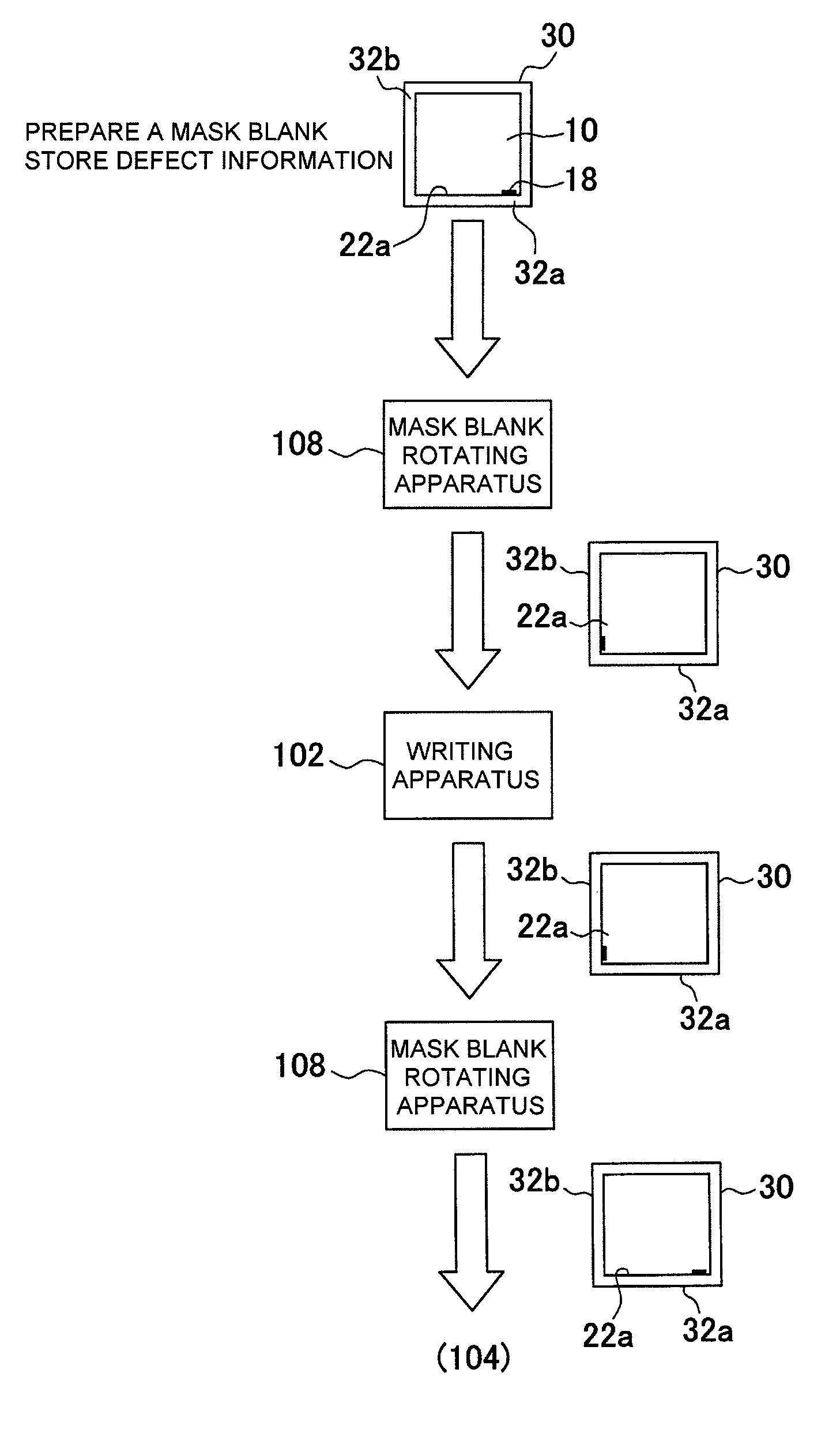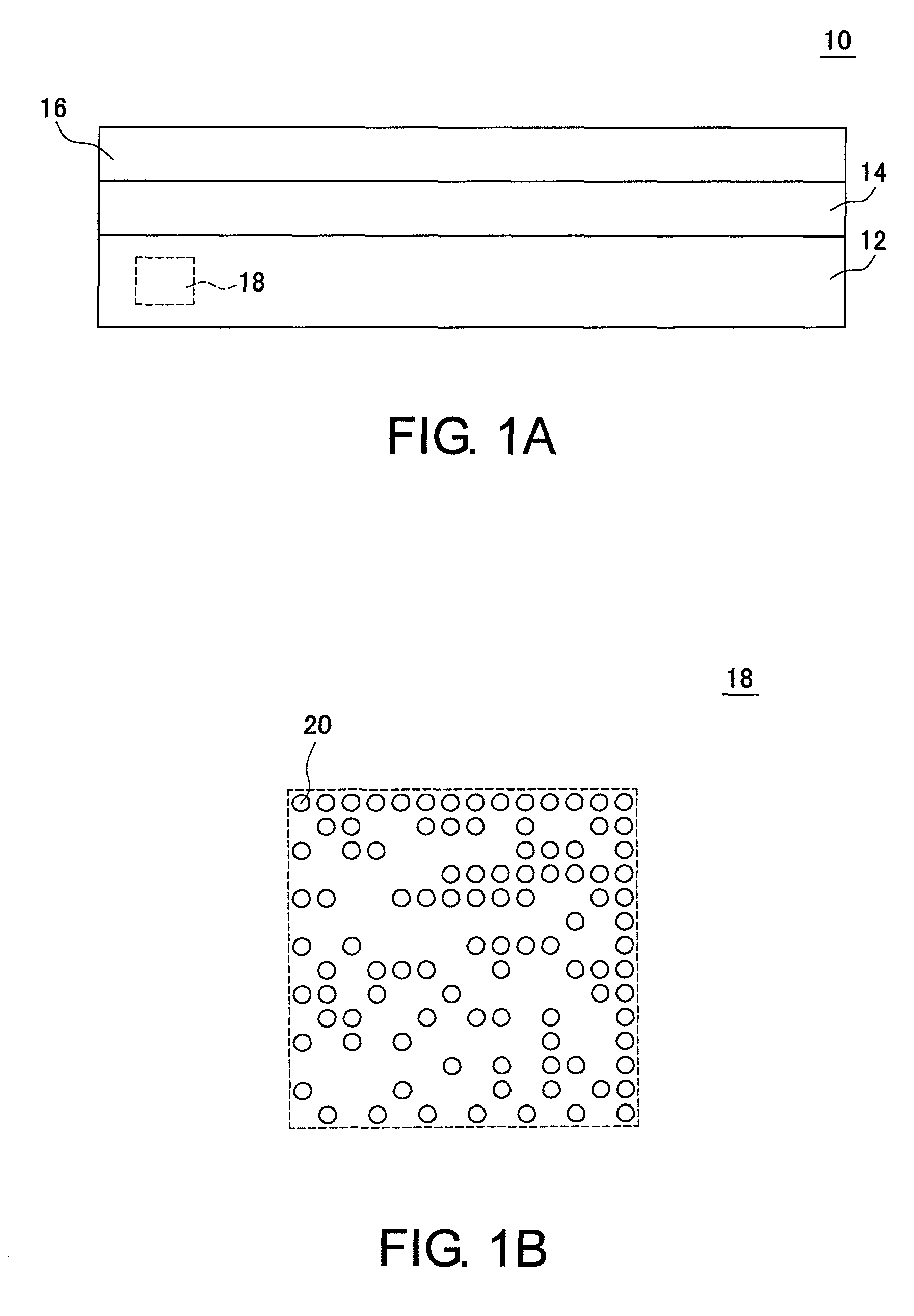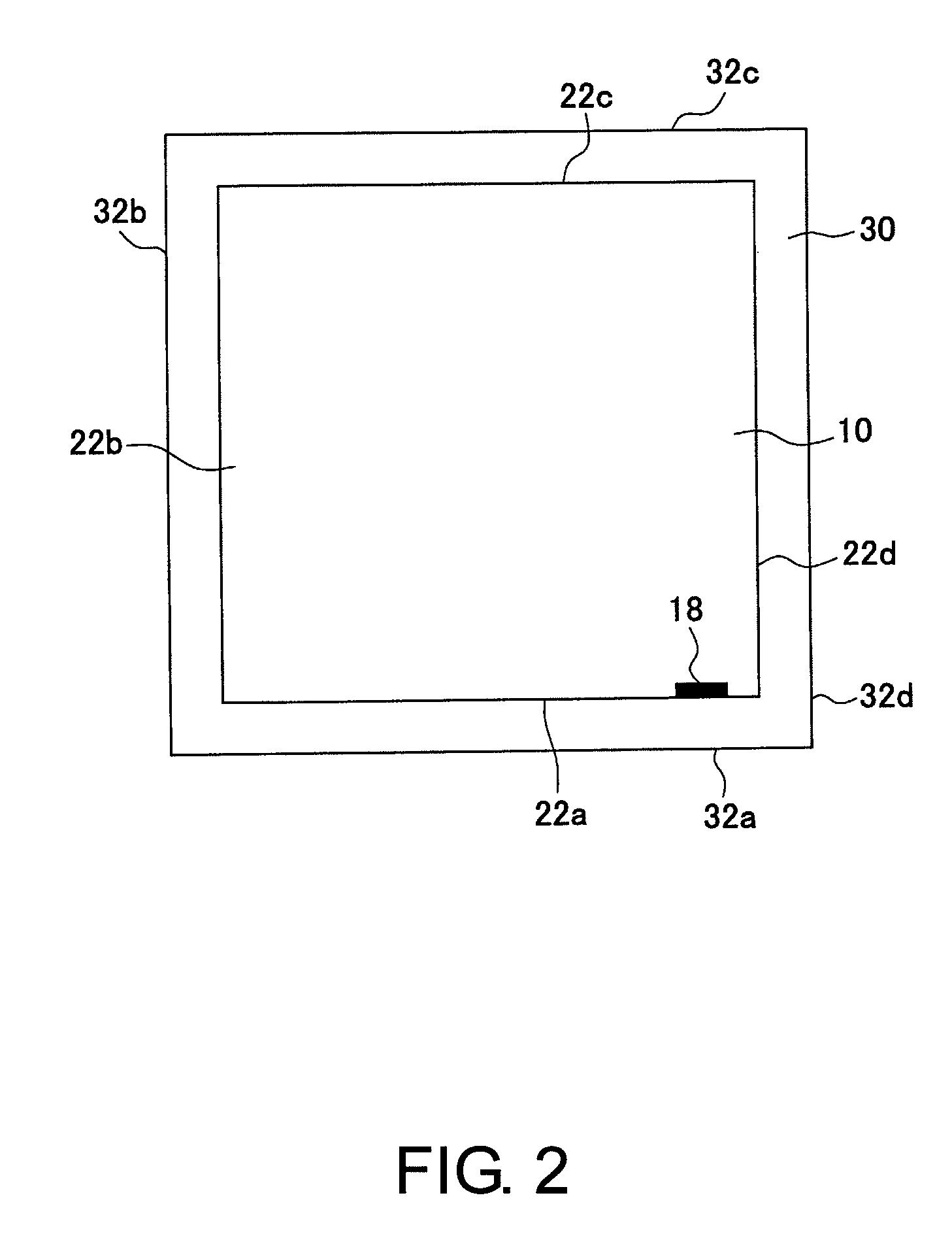Photomask manufacturing method
a manufacturing method and mask technology, applied in the field of photomask manufacturing methods, can solve the problems of difficult automatic reading of identification markers using sensors, difficult to automate the photomask manufacturing process, and difficult to manage mask blanks, etc., and achieve the effect of secure detection
- Summary
- Abstract
- Description
- Claims
- Application Information
AI Technical Summary
Benefits of technology
Problems solved by technology
Method used
Image
Examples
Embodiment Construction
[0049]Hereinbelow, an embodiment according to this invention will be described with reference to the drawings. FIG. 1A shows an example of the structure of a mask blank 10 for use in a photomask manufacturing method according to an embodiment of this invention.
[0050]The mask blank 10 is a mask blank having a mask pattern thin film 14 and a resist film 16 stacked in this order on a substrate 12.
[0051]The substrate 12 is a mask blank glass substrate and is made of, for example, a synthetic quartz glass. The substrate 12 may alternatively be made of a SiO2—TiO2-based low thermal expansion glass, a crystallized glass with a β-quartz solid solution precipitated, a soda-lime glass, or the like. The substrate 12 has main surfaces and end faces each polished to a mirror surface with a predetermined surface roughness. In this example, an identification marker 18 is formed on one of the end faces of the substrate 12. The mask pattern thin film 14 is a light-shielding film, a light-semitransmi...
PUM
| Property | Measurement | Unit |
|---|---|---|
| rotation angle | aaaaa | aaaaa |
| rotation angle | aaaaa | aaaaa |
| rotation angle | aaaaa | aaaaa |
Abstract
Description
Claims
Application Information
 Login to View More
Login to View More - R&D
- Intellectual Property
- Life Sciences
- Materials
- Tech Scout
- Unparalleled Data Quality
- Higher Quality Content
- 60% Fewer Hallucinations
Browse by: Latest US Patents, China's latest patents, Technical Efficacy Thesaurus, Application Domain, Technology Topic, Popular Technical Reports.
© 2025 PatSnap. All rights reserved.Legal|Privacy policy|Modern Slavery Act Transparency Statement|Sitemap|About US| Contact US: help@patsnap.com



